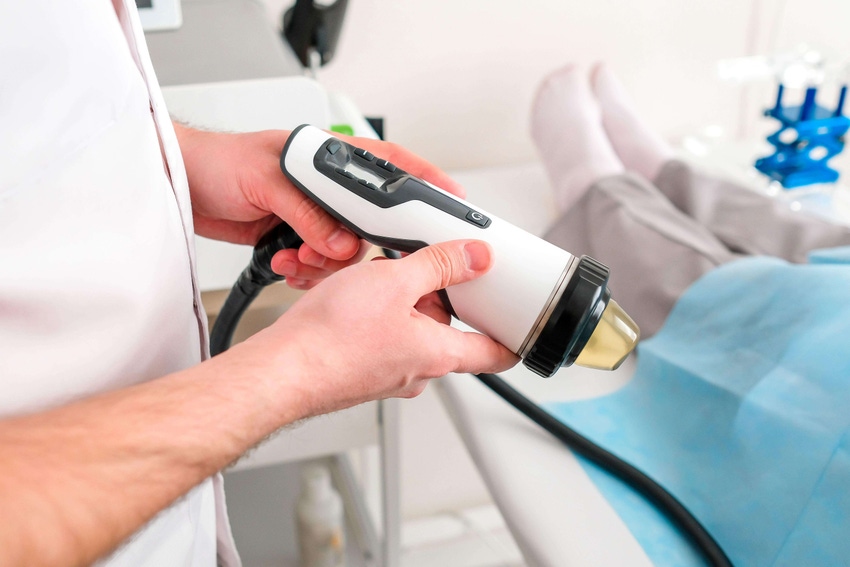
Cybersecurity In-Depth: Feature articles on security strategy, latest trends, and people to know.
Manufacturers need to document a medical device's intended use and operational environment, as well as plan for misuse, such as a cyberattack.

Due to the increasing concerns about medical devices' cybersecurity risks, European Union regulators put forward a new set of market entry requirements for medical devices and in vitro diagnostic medical devices to reduce the risk of patient harm as a result of a cyber incident, as well as protect national health systems.
EU regulators are raising the bar on cybersecurity requirements with the European Union Medical Device Regulation (MDR) and the European Union In Vitro Diagnostic Regulation (IVDR), which went into effect May 26, 2021. The regulations are intended to "establish a robust, transparent, predictable and sustainable regulatory framework ... which ensures a high level of safety and health whilst supporting innovation."
Organizations have until May 26, 2024, or when their current market certification expires, to make the necessary changes to their quality management systems and technical documentation to comply with the new requirements. Despite the number of assessment processes and standards and guidance documents that have been provided, medical device manufacturers, providers, and certification services may not be ready in time.
More than 90% of currently valid AIMDD/MDD certificates will expire by 2024, so a significant number of existing devices need to be reapproved, in addition to new devices entering the market. It is estimated that 85% of products currently on the market today still require new certification under MDR.IVDR. Considering that the process takes 13 to 18 months, companies need to start the process now in order to meet the 2024 deadline.
Setting Instructions for Use
In general, cybersecurity processes are not that different from general device performance and safety processes. The goal is to assure (through verification and validation) and demonstrate (through documentation) device performance, risk reduction and control, and minimization of foreseeable risks and undesirable side effects through risk management. Combination products or interconnected devices/systems also require management of the risks that result from interaction between software and the IT environment.
The Medical Device Coordination Group's MDCG-16 Guidance on Cybersecurity for medical devices explains how to interpret and fulfill cybersecurity requirements under MDR and IVDR. Manufacturers are expected to take into account the principles of the secure development life cycle, security risk management, and verification and validation. Further, they should provide minimum IT requirements and expectations for cybersecurity processes, such as installation and maintenance in their device's instructions for use. "Instructions for use" is a highly structured required section of the certification application manufacturers must file.
Cybersecurity measures must reduce any risks associated with the operation of medical devices, including cybersecurity-induced safety risks, to provide a high level of protection for health and safety. The International Electrotechnical Commission (IEC) spells out high-level security features, best practices, and security levels in IEC/TIR 60601-4-5. Another IEC technical report, IEC 80001-2-2, enumerates specific design and architecture security capabilities, such as automatic logoff, audit controls, data backup and disaster recovery, malware detection/protection, and system and OS hardening.
To meet ISO guidelines (ISO 14971), the Association for the Advancement of Medical Instrumentation advises striking a balance between safety and security. Careful analysis is required to prevent security measures from compromising safety and safety measures from becoming a security risk. Security needs to be right-sized and should be neither too weak nor too restrictive.
Sharing Responsibility for Cybersecurity
Cybersecurity is a responsibility shared between the device manufacturer and the deploying organization (typically the customer/operator). Thus, specific roles that provide important cybersecurity functions — such as integrator, operator, healthcare and medical professionals, and patients and consumers — require careful training and documentation.
The "instructions for use" section of a manufacturer's certification application should provide cybersecurity processes including security configuration options, product installation, initial configuration guidelines (e.g., change of default password), instructions for deploying security updates, procedures for using the medical device in failsafe mode (e.g., enter/exit failsafe mode, performance restrictions in fail-safe mode, and data recovery function when resuming normal operation), and action plans for the user in case of an alert message.
That section should also provide user requirements for training and enumerate required skills, including IT skills required for the installation, configuration, and operation of the medical device. In addition, it should specify requirements for the operating environment (hardware, network characteristics, security controls, etc.) that cover assumptions on the environment of use, risks for device operation outside the intended operating environment, minimum platform requirements for the connected medical device, recommended IT security controls, and backup and restore features for both data and configuration settings.
Specific security information may be shared through documentation other than the instructions for use, such as instructions for administrators or security operation manuals. Such information may include a list of IT security controls included in the medical device, provisions to ensure integrity/validation of software updates and security patches, technical properties of hardware components, the software bill of materials, user roles and associated access privileges/permissions on the device, logging function, guidelines on security recommendations, requirements for integrating the medical device into a health information system, and a list of the network data streams (protocol types, origin/destination of data streams, addressing scheme, etc.).
If the operating environment is not exclusively local but involves external hosting providers, the documentation must clearly state what, where (in consideration of data-residency laws), and how data is stored, as well as any security controls to safeguard the data in the cloud environment (e.g., encryption). The instructions for use section of the documentation needs to provide specific configuration requirements for the operating environment, such as firewall rules (ports, interfaces, protocols, addressing schemes, etc.).
Security controls implemented during premarket activities may be inadequate to maintain an acceptable benefit-risk level during the operational life of the device. Therefore, regulations require the manufacturer to establish a post-market cybersecurity surveillance program to monitor operation of the device in the intended environment; to share and disseminate cybersecurity information and knowledge of cybersecurity vulnerabilities and threats across multiple sectors; to perform vulnerability remediation; and to plan for incident response.
The manufacturer is further responsible for investigating and reporting serious incidents and fielding safety corrective actions. Specifically, incidents that have cybersecurity-related root causes are subject to trend reporting, including any statistically significant increase in the frequency or severity of incidents.
Planning for All Scenarios
Today's medical devices are highly integrated and operate in a complex network of devices and systems, many of which may not be under control of the device operator. Therefore, manufacturers should carefully document the device's intended use and intended operational environment, as well as plan for reasonably foreseeable misuse, such as a cyberattack.
Cybersecurity pre- and post-market risk management requirements and supporting activities are not necessarily different from traditional safety programs. However, they do add an additional level of complexity as:
The range of risks to consider is more complex (safety, privacy, operations, business).
They require a specific set of activities that need to be conducted along the device development life cycle via a Secure Product Development Framework (SPDF).
Global regulators, including MDR/IVDR, are starting to enforce a higher level of security for medical devices and specifically requiring demonstrable security as part of the larger device life cycle. Devices should meet, based on device type and use case, a security baseline, and manufacturers need to maintain that baseline over the entire lifetime of the device.
About the Author(s)
You May Also Like
Beyond Spam Filters and Firewalls: Preventing Business Email Compromises in the Modern Enterprise
April 30, 2024Key Findings from the State of AppSec Report 2024
May 7, 2024Is AI Identifying Threats to Your Network?
May 14, 2024Where and Why Threat Intelligence Makes Sense for Your Enterprise Security Strategy
May 15, 2024Safeguarding Political Campaigns: Defending Against Mass Phishing Attacks
May 16, 2024
Black Hat USA - August 3-8 - Learn More
August 3, 2024Cybersecurity's Hottest New Technologies: What You Need To Know
March 21, 2024

